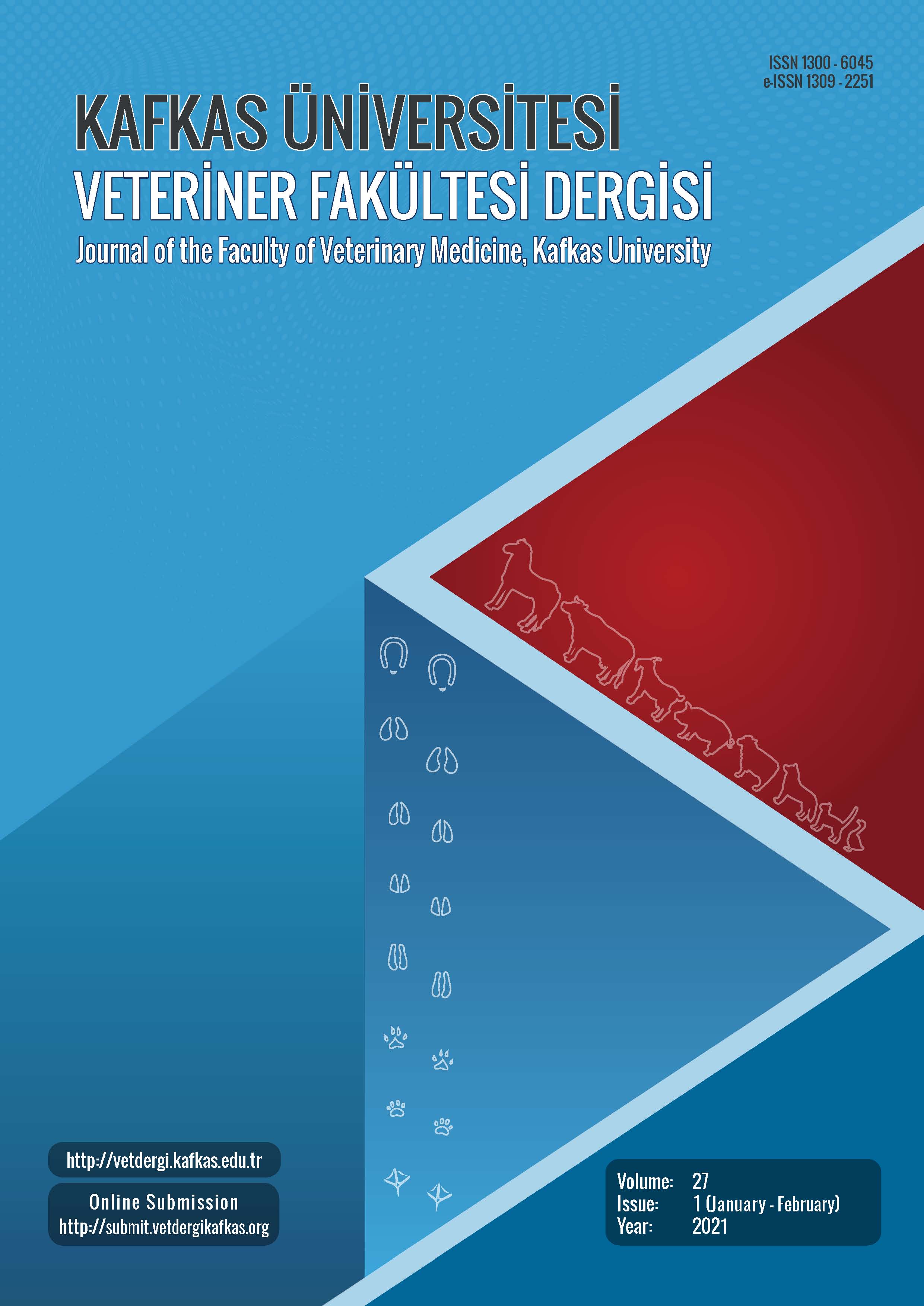
This journal is licensed under a Creative Commons Attribution-NonCommercial 4.0 International License
Kafkas Üniversitesi Veteriner Fakültesi Dergisi
2021 , Vol 27 , Issue 1
Four Temperate Bacteriophages from Methicillin-resistant Staphylococcus aureus Show Broad Bactericidal and Biofilm Removal Activities
1Department of Medical Microbiology, Faculty of Medicine, Karadeniz Technical University, TR-61080 Trabzon - TURKEY2School of Natural and Computational Science, Dire Dawa University, P. O. Box 1362, Dire Dawa, ETHIOPIA DOI : 10.9775/kvfd.2020.24680 The emergence of multi-drug resistance among many bacteria including zoonotic pathogens in the food chain poses a growing public health threat to humans, animals, and the environment worldwide. The inefficiency of current antibiotics to control these pathogens necessitated the development of alternative approaches, such as phage therapy, for the prevention and treatment of human and animal infections, food safety, and wastewater treatment. In this study, four temperate bacteriophages, designated as Trsa205, Trsa207, Trsa220, and Trsa222 were isolated by mitomycin C induction from methicillin-resistant Staphylococcus aureus (MRSA) strains. The phages were characterized based on their electron microscope morphology, burst size, host range, and biofilm removal potential. Based on their morphology, all four phages with isometric heads and long non-contractile tails belong to Siphoviridae family. The one-step growth curves of phages revealed that Trsa205 and Trsa207 have latent periods of about 20 min that results in a burst size of 30 and 45 virions/host cell, respectively, while Trsa220 and Trsa222 showed 25 min of latent period and produced 20 virus particles/cell. The agar-spot assay was used for phage host range determination, and biofilm removal activities were measured spectrophotometrically after crystal violet staining. It was found that at least two-thirds of 56 S. aureus strains (66%) could be lysed by phages when used in combination, and 20-38% by one of the phages. The four phages in combination were able to remove the S. aureus biofilms by 65%. Our results indicated that the newly identified bacteriophages have the potential to be used in phage therapy against multi-drug resistant S. aureus including MRSA and removal of biofilms. Keywords : Bacteriophage, Siphoviridae, Staphylococcus, Biofilm, Host range










